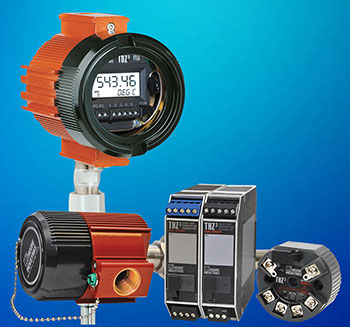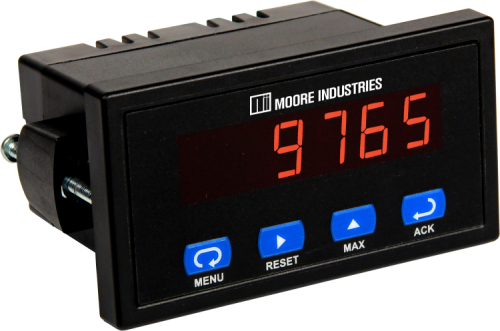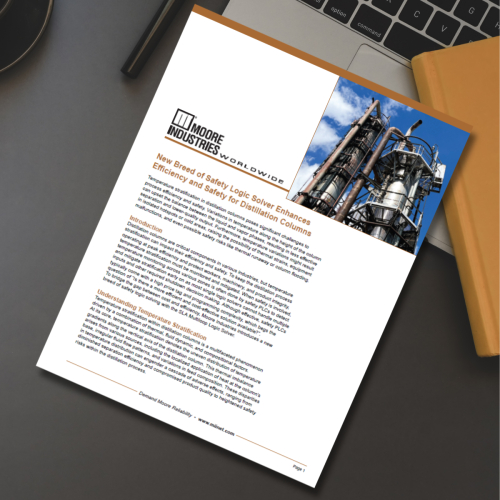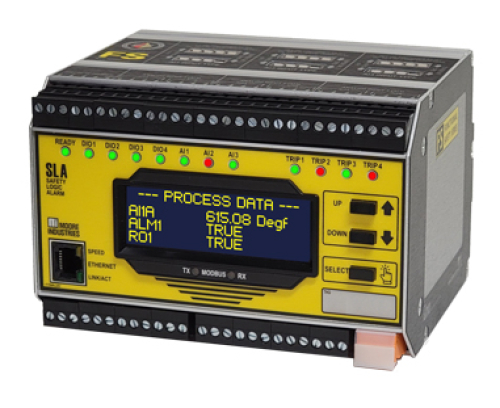 The THZ3 and TDZ3 Dual Input Smart HART® temperature transmitters are full of new features that provide more reliability and a higher degree of measurement accuracy. If you are looking at new temperature transmitters or are thinking about upgrading from your existing temperature transmitters, they are an ideal solution.
The THZ3 and TDZ3 Dual Input Smart HART® temperature transmitters are full of new features that provide more reliability and a higher degree of measurement accuracy. If you are looking at new temperature transmitters or are thinking about upgrading from your existing temperature transmitters, they are an ideal solution.
Want to know why you should consider the THZ3/TDZ3 temperature transmitters? We’ve come up with a “six-pack” of reasons:
1. Backup and Fail-Over Protection
The dual sensor inputs of the THZ3 and TDZ3 provide backup and fail-over protection. One sensor can be set as a backup for the other in case of a sensor failure. The transmitter automatically switches to the backup sensor so that the customer never loses their critical measurement. You can even use two different sensor types such as an RTD as the primary sensor and a thermocouple as the secondary sensor.
2. Average and Differential Measurement
Average the readings from two sensors, such as in a tank where stratification is a concern. Differential measurement allows you to monitor a temperature differential across a heat exchanger, for example, or for BTU calculations.
3. High-Select and Low-Select
You can use two sensors and select with the higher or lower of the two as a basis for control in processes that cannot tolerate running hot or cold. High-Select and Low-Select enables you to reduce the chances of an over-temperature or under-temperature condition occurring.
4. Device Intelligence
With the Device Intelligence feature set, you have a wide array of options for smarter control and monitoring including:
- Sensor drift and corrosion detection checks and alerts users when the sensor is drifting out of a preset range or when the resistance due to corrosion exceeds set parameters.
- Smart range alarms with four HART alarms – set to any input or calculated input –detect when the variable is within or outside of user preset limits.
- A High Availability option that enables the selection of how the AO behaves when there is an input failure or out-of-range value detected by the transmitter. This prevents nuisance alarms on startups or batch process shutdowns.
- Input simulation capability allows manual input of a direct or calculated value. This essentially simulates a real input, allowing users to test the AO or any HART diagnostic and range alarms.
5. Configuration Using PACTware and DTMs or using the HART DD
The THZ3 and TDZ3 transmitters are DTM and HART programmable with user-oriented basic configuration for the fast and accurate set. You can program or monitor the transmitters with any FDT compliant host or program – such as PACTware (available on our website along with a tutorial video) – using the THZ3/TDZ3 DTM. The FDT/DTM standard is widely used by customers worldwide who want a consistent and universal way to program, monitor and diagnose field devices.
Using the FDT/DTM gives you access to a range of setup and diagnostic features including:
- Programmable span, zero and input type values.
- Adjustable sensor trims offsets to compensate for measurement errors caused when a sensor is not performing to its rated curve specifications.
- Setting a damping time between 0-60 seconds to eliminate imprecise readings caused by noise and other insignificant process fluctuations.
- Viewing of real-time process values.
6. Trimming and Programming Custom Curves
The THZ3 and TDZ3 go beyond other sensor’s trimming capabilities by allowing trimming with two data points within the selected zero and span measurement range. This advantage allows a complete process range to be monitored while placing measurement emphasis on a specific segment of the range most critical to the process.
Beyond trimming, you can create up to four custom curves and apply them to any available device variables in the THZ3/TDZ3. You can program several properties for each curve including the number of active points in the custom curve, units of the inbound data to be processed by the curve (X values) and units of the outbound data that is the result of processing by the curve (Y values).
These are just some of the best new features in the THZ3/TDZ3.
Do you want more information? Download the data sheet. Or visit the catalog.
Need to get price or availability or have a technical question?
Send us a message using E-Help.






